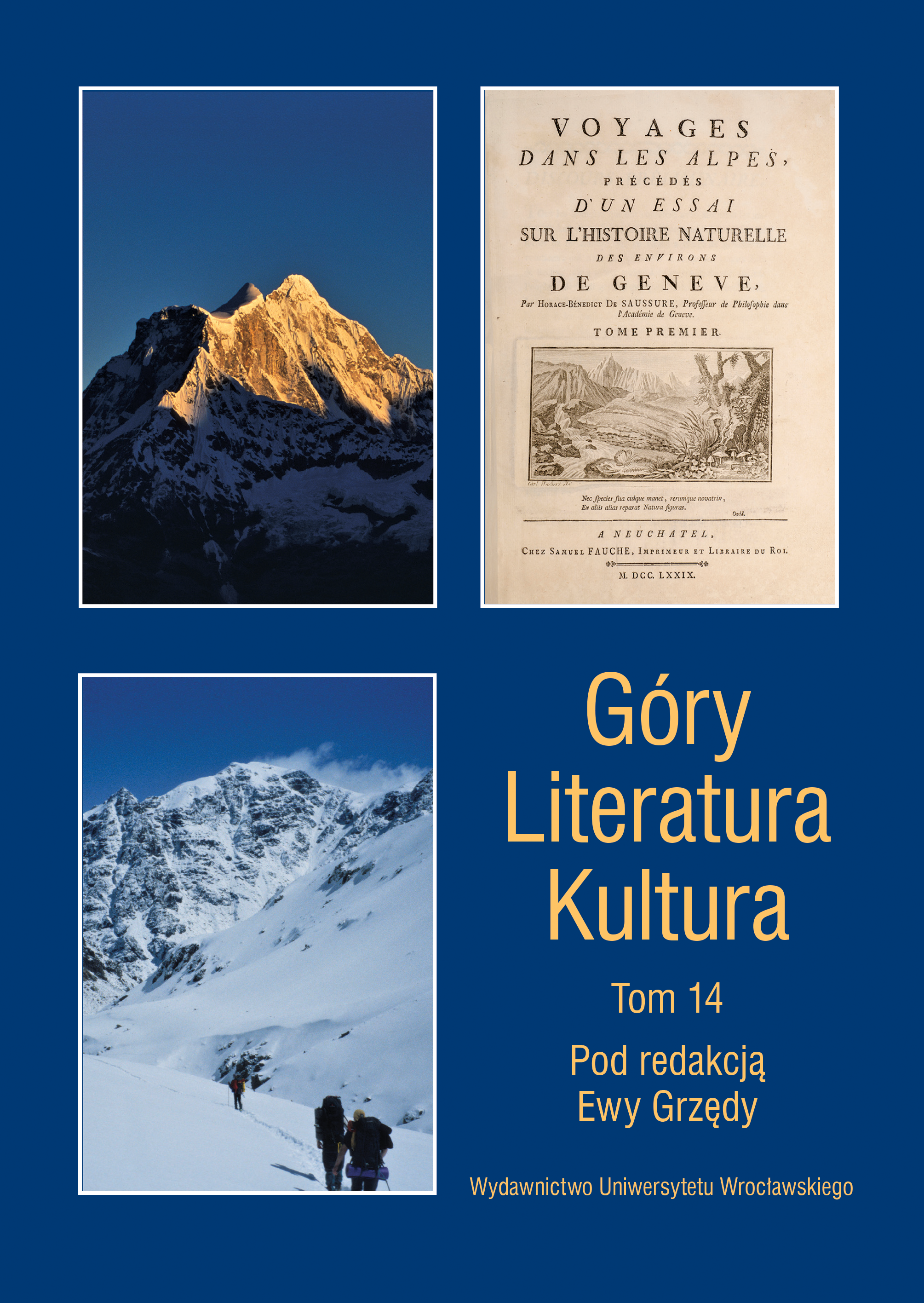

Studies and sketches

One of characteristic phenomena in contemporary Polish literary culture is the emergence of a niche phenomenon of mountain literature. The term “mountain literature” has become part of colloquial discourse, also aspiring to be present in the language of literature studies (including literary criticism), which previously featured terms like “Alpine literature”, “mountaineering literature”, “Tatra literature”, “Tatra prose”. Other commonly used terms were “mountain climbing literature” and “exploration literature”. The term “Alpine literature” was introduced into scholarly discourse by Claire-Éliane Engel (1903–1976). The author of the present study points to links between the history of mountain literature, and the history of mountain exploration as well as history of tourism and mountaineering, referring to the literary traditions of various mountain ranges: the Alps, the Tatras, Karkonosze (Giant Mountains), Bieszczady, Gorce, Beskids, Góry Świętokrzyskie (Holy Cross Mountains). In addition, there are strands of research dealing with a typological analysis of mountain motifs and their function. The significance of such studies lies in the fact that they demonstrate in a clear manner the introduction of mountain motifs into literature and the evolution of the artistic forms of their expression. However, transformations in the literary approach to the mountains cannot be documented only by means of a territorial selection of specific motifs, and the whole question of depicting mountains and responding to them cannot be locked within the limited framework of the various national literatures. What is useful in this respect is a comprehensive comparative approach to the subject matter, interpreted both in the synchronic (formation of attitudes) and diachronic perspective (so-called influences, impact of models, borrowing of poetics also in connection with changes in tourist or mountaineering styles). What becomes of crucial significance here is the use of more general categories and comprehensive collective terms — mountain literature, mountaineering literature, mountain climbing literature. These categories encompass works dealing primarily with the mountains and human interactions with them. They bring in a supranational and supraterritorial understanding of the subject of mountains, without limiting the role of territorial detail in the construction of literary motifs and images. In defining mountain literature the author uses the classification of the function of nature motifs in literary works presented by Tadeusz Makowiecki in Sprawozdania Towarzystwa Naukowego w Toruniu in 1951, in his article “Funkcja motywu przyrody w dziele literackim” (Function of a nature motif in a literary work).1 On the other hand, when it comes to the phenomena discussed in the study, what is representative of fiction is a type of narrative genre known as mountain novel (roman de montagne, Bergroman). Referring to archetypic formulas of mountain literature (Dante, Petrarch, Salomon Gessner, Jean A. Deluc, H.B. de Saussure), the author points to their formal aspects: thematic-substantive, linguistic and genological. In addition, he discusses the emergence of mountaineering literature (Edward Whymper, Leslie Stephen, Polish mountaineers’ prose).